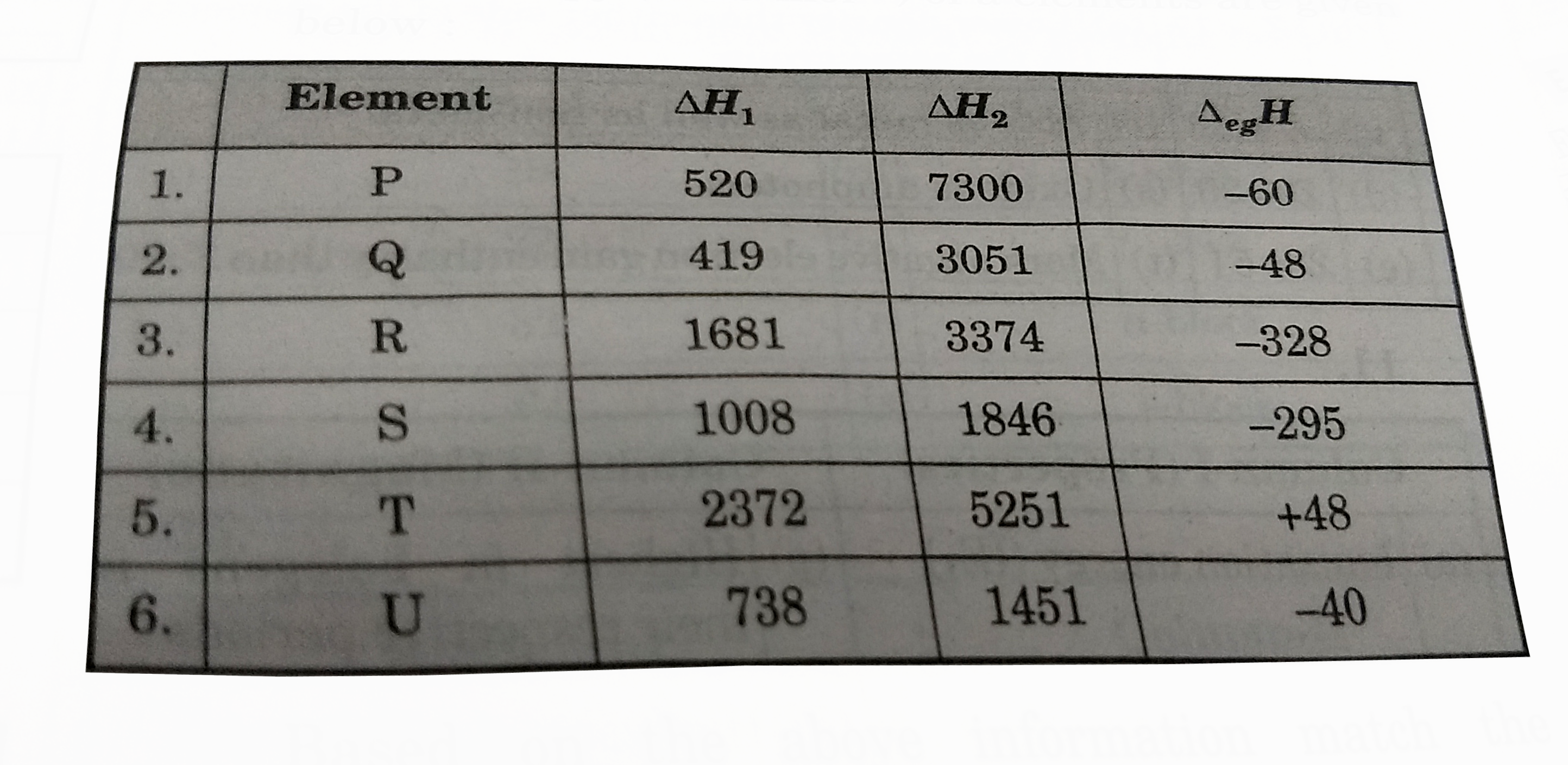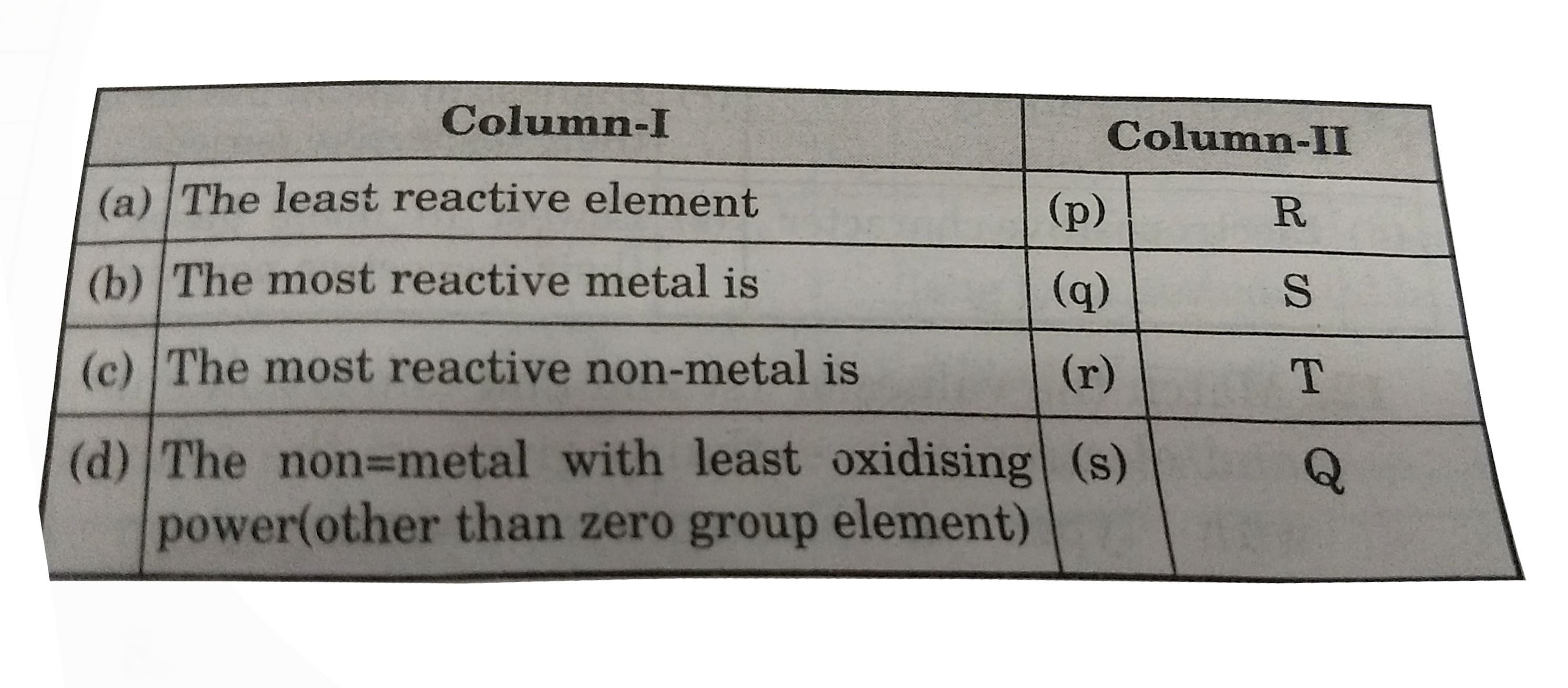Calculate the lattice enthalpy of CaCl2 given that the enthalpy of :
i) Sublimation of Ca in 121.8 kJ mol−1
ii) Dissociation of Cl2 to 2Cl is 242.8 kJ mol−1
iii) Ionisation of Ca to Ca2+ is 2422 kJ mol−1
iv) Electron gain for Cl to Cl− is - 355 kJ mol−1
v) ΔH(o)f overall is −795 kJ mol−1Solution in Tamil
Step by step video & image solution for Calculate the lattice enthalpy of CaCl_(2) given that the enthalpy of : i) Sublimation of Ca in "121.8 kJ mol"^(-1) ii) Dissociation of Cl_(2) to 2Cl is "242.8 kJ mol"^(-1) iii) Ionisation of Ca" to "Ca^(2+)" is 2422 kJ mol"^(-1) iv) Electron gain for Cl" to "Cl^(-)" is - 355 kJ mol"^(-1) v) DeltaH_(f)^((o))" overall is "-"795 kJ mol"^(-1) by Chemistry experts to help you in doubts & scoring excellent marks in Class 11 exams.
Updated on:21/07/2023Topper's Solved these Questions
- CHEMICAL BONDINGBOOK - NCERT TAMILCHAPTER - CHEMICAL BONDINGEXERCISE - EVALUATION
30 Videos
- CHEMICAL BONDINGBOOK - NCERT TAMILCHAPTER - CHEMICAL BONDINGEXERCISE - Questions(E. Explain briefly on the following)
9 Videos
- BASIC CONCEPTS OF ORGANIC REACTIONSBOOK - NCERT TAMILCHAPTER - BASIC CONCEPTS OF ORGANIC REACTIONSEXERCISE - EVALUATION
15 Videos
- CHEMICAL CALCULATION BOOK - NCERT TAMILCHAPTER - CHEMICAL CALCULATION EXERCISE - Question ( Answer the following )
7 Videos
Similar Questions
In which of the following Compounds does the central atom obey the octet rule?
View SolutionDiscuss the important properties of electrovalent compounds.
View SolutionFor the following reactions:
(A) CH3CH2CH2Br+KOH→CH2=CH2+KBr+H2O
(B) (CH3)3CBr+KOH→(CH3)3COH+KBr
( c)
Which of the following statement is correct ?
View SolutionCan two different compounds have same molecular formula ? Illustrate your answer with two examples.
View SolutionGiven the bond energies of H−H and Cl−Cl are 430kJmol−1 and 240kJmol−1, respectively, and ΔfH∘ for HCl is −90kJmol−1. Bond enthalpy of HCl is
View SolutionThe first (ΔH1) and second (ΔH2) ionisation enthalpies (in kJmol−1) and the (ΔHeg) electron gain enthalpy (in kJmol−1) of a elements are given below:

Based on the above information match the following columns.

View SolutionCalculate lattice energy for the change,
Li+(g)+Cl−(g)→LiCl(g)
Given that
ΔHsublimation of Li=160.67kJmol−1,ΔHDissociation of Cl2=244.34kJmol−1,ΔHionisation of Li(g)=520.07kJmol−1,ΔHE.A of Cl(g)=−365.26kJmol−1,ΔHf of LiCl(s)=−401.66kJmol−1,
View SolutionCalculate the enthalpy of vaporisation of I_(2) if the sublimation energy and enthalpy of fusion of I_(2) is 57.3 kJ mol^(-1) and 15.5 kJ mol^(-1) respectively
View SolutionCalculate the lattice enthalpy of KCl from the following data by Born- Haber's Cycle. Enthalpy of sublimation of K = 89 kJ mol^(–1) Enthalpy of dissociation of Cl = 244 kJ mol^(–1) Ionization enthalpy of potassium = 425 kJ mol^(–1) Electron gain enthalpy of chlorine = –355 kJ mol^(–1) Enthalpy of formation of KCl = –438 kJ mol^(-1)
View SolutionThe electron gain enthalpy ΔegH is -349 kJ mol−1 . If the ground state energy of Cl(g) is x kJ mol−1 . The ground state energy (in kJ mol−1 ) of Cl− (g) is
View SolutionCalculate the lattice energy of CaCl_2 from the given data. Ca_((s)) + Cl_(2(g)) to CaCl_(2(s)) DeltaH_f^0 =-795 "kJ mol"^(-1) Sublimation : Ca_((s)) to Ca_((g)) " " DeltaH_1^0=+121 "kJ mol"^(-1) Ionisation : Ca_((g)) to Ca_((g))^(2+) +2e^(-) " " DeltaH_2^0=+2422 "kJ mol"^(-1) Dissociation : Cl_(2(g)) to 2Cl_((g)) " " DeltaH_3^0=+242.8 "kJ mol"^(-1) Electron affinity : Cl_((g)) + e^(-) to Cl_((g))^(-) " " DeltaH_4^0=-355 "kJ mol"^(-1)
View SolutionGiven that bond energies H-H and Cl-Cl are 430kJmol−1and240kJmol−1 respecively and ΔfH for HCl is −90kJmol−1. Bond enthalpy of HCl is :
View SolutionCalculate the lattice enthalpy of CaCl_(2) given that the enthalpy of : i) Sublimation of Ca in "121.8 kJ mol"^(-1) ii) Dissociation of Cl_(2) to 2Cl is "242.8 kJ mol"^(-1) iii) Ionisation of Ca" to "Ca^(2+)" is 2422 kJ mol"^(-1) iv) Electron gain for Cl" to "Cl^(-)" is - 355 kJ mol"^(-1) v) DeltaH_(f)^((o))" overall is "-"795 kJ mol"^(-1)
View SolutionBelow are some values of enthalpy: O=-141 kJ mol^(-1), F = -328 kJ mol^(-1) S=-200 kJ mol^(-1), Cl=-349 kJ mol^(-1) What values do they represent?
View Solutionकुछ बंधों की बंध ऊर्जाएँ नीचे दी गई हैं:
Cl−C=242.8kJ mol−1,H−Cl=431.8kJ mol−1,O−H=464kJ mol−1,O=O=442kJ mol−1
B.E. का प्रयोग करके, निम्न अभिक्रिया, 2Cl2+2H2O→4HCl+O2, के लिए ΔH की गणना कीजिए ।
View SolutionGiven that bond energies of H - H and Cl -Cl are 430 "kJ/mol"^(-1) and 240 "kJ/mol"^(-1) respectively and DeltaH_(f) for HCI is -90 "kJ/mol"^(-1) , bond enthalpy of HCI is
View Solution
